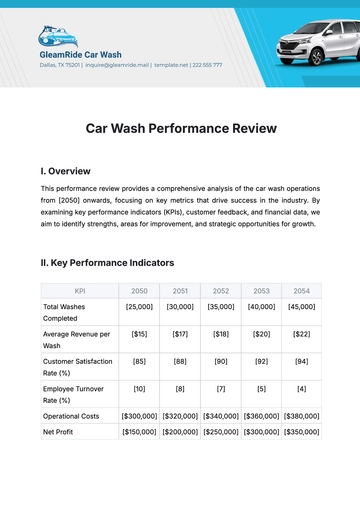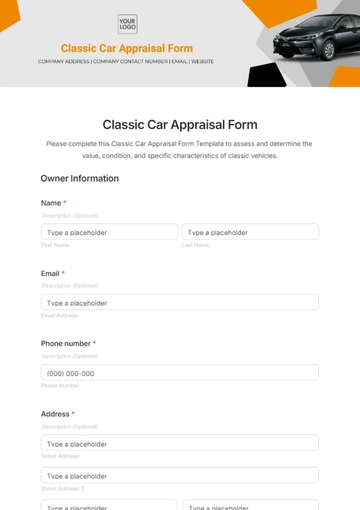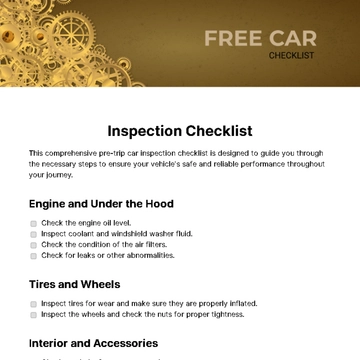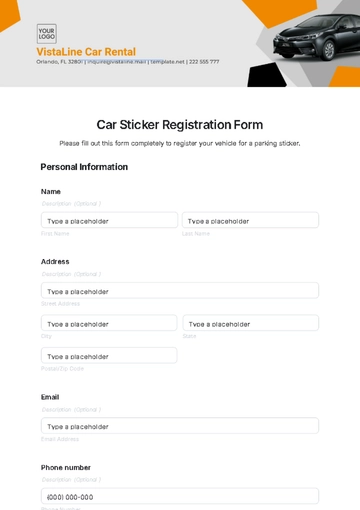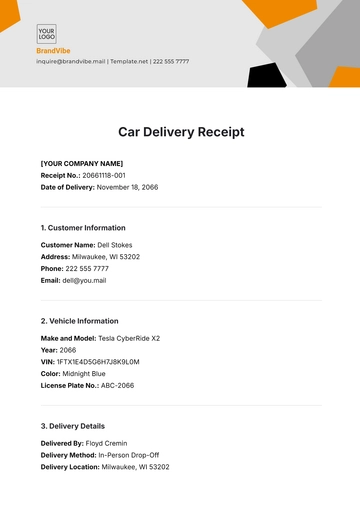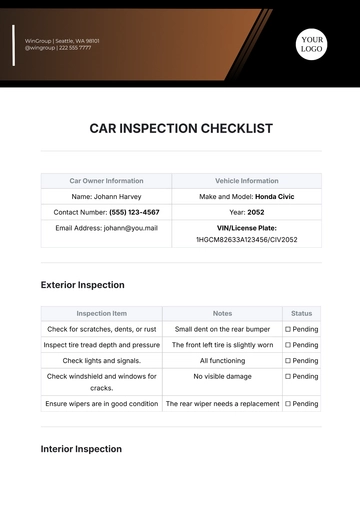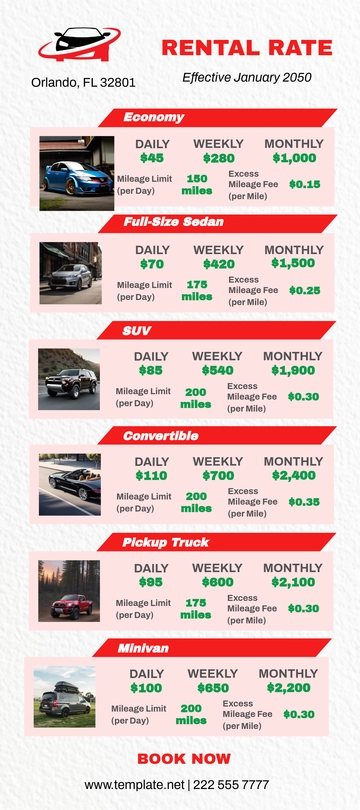Free Car Wash Risk Identification Feasibility Study
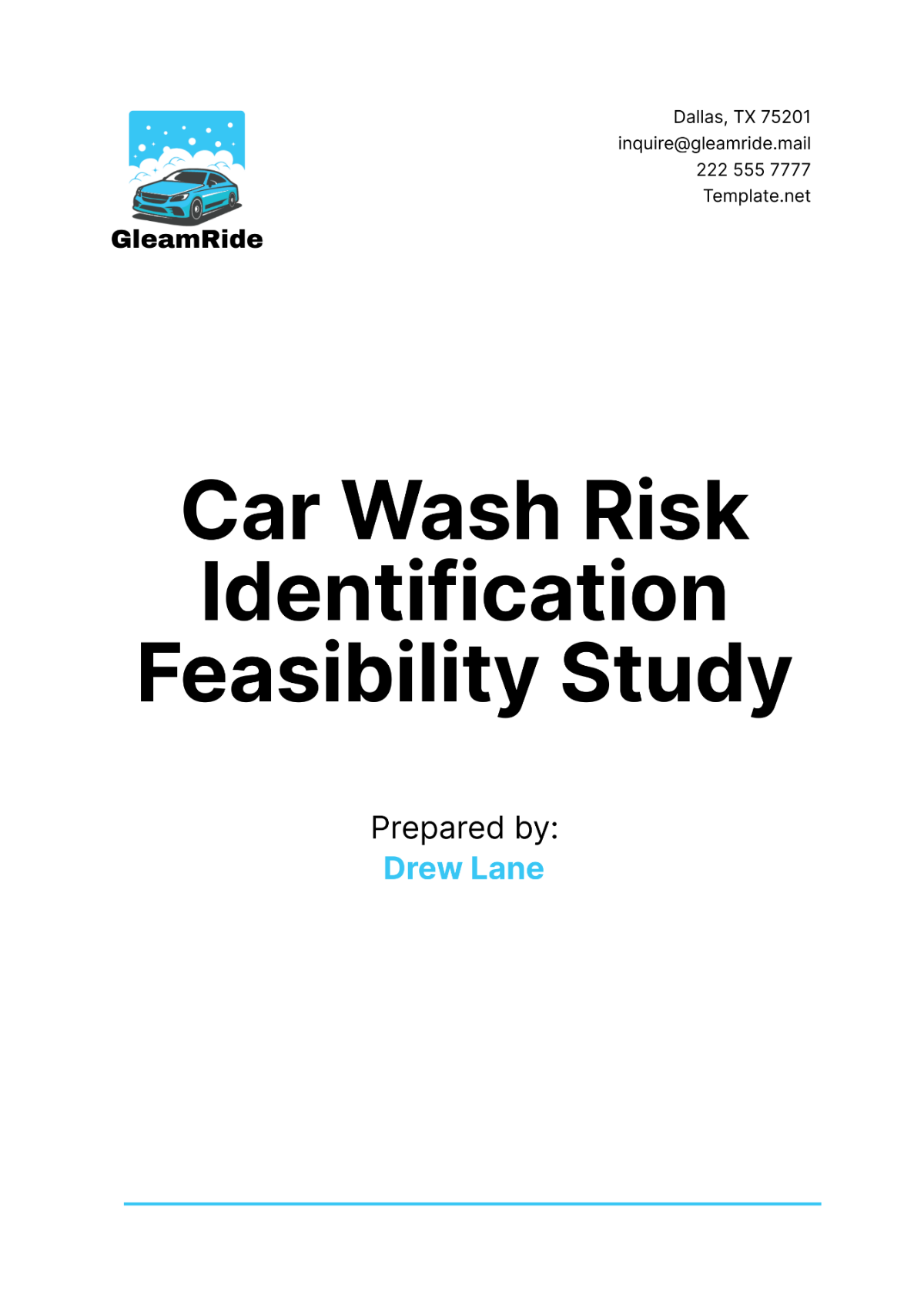
I. Introduction
Purpose: The purpose of this Car Wash Risk Identification Feasibility Study is to identify potential risks associated with operating a car wash business under [Your Company Name] and propose mitigation strategies to manage these risks effectively.
Scope: This study covers various aspects of risk identification including financial, operational, environmental, and safety risks. The study aims to provide a comprehensive understanding of the risks involved and the feasibility of managing them.
B. Methodology
Data Collection: Data was collected through surveys, interviews with industry experts, and analysis of existing literature. This ensures a thorough understanding of the potential risks.
Risk Assessment: Each identified risk was assessed based on its likelihood and potential impact. This helps prioritize the risks and focus on the most significant ones.
Mitigation Strategies: Mitigation strategies were developed for each risk, focusing on practical and effective measures to manage or eliminate the risks. This ensures that the proposed strategies are feasible and implementable.
II. Financial Risks
The following table outlines the key financial risks identified in the feasibility study, along with their potential impact and likelihood.
Financial Risk | Potential Impact | Likelihood |
|---|---|---|
Revenue Fluctuations | High | Medium |
Cost Overruns | High | High |
Credit Risk | Medium | Medium |
Insurance Costs | Medium | Low |
A. Revenue Fluctuations
Seasonality: Revenue may fluctuate due to seasonal changes, with higher demand in certain months and lower demand in others. This can affect cash flow and profitability.
Market Competition: Increased competition in the area can lead to reduced customer base and lower revenues. This requires careful market analysis and competitive pricing strategies.
Economic Conditions: Economic downturns can reduce discretionary spending, affecting car wash services. This highlights the importance of a diversified service offering.
B. Cost Overruns
Operational Costs: Unexpected increases in operational costs, such as utilities and maintenance, can impact profitability. Effective budgeting and cost control measures are essential.
Supply Chain Issues: Disruptions in the supply chain can lead to increased costs for cleaning supplies and equipment. Establishing reliable suppliers and contingency plans can mitigate this risk.
Labor Costs: Fluctuations in labor costs due to changes in minimum wage laws or labor shortages can affect financial stability. Implementing efficient staffing models can help manage labor costs.
C. Credit Risk
Customer Defaults: Customers failing to pay for services on time can affect cash flow. Implementing strict credit policies and timely follow-up can reduce this risk.
Vendor Credit Terms: Negotiating favorable credit terms with suppliers can help manage cash flow effectively. This requires building strong relationships with suppliers.
Loan Repayment: Ensuring timely repayment of loans to avoid penalties and maintain a good credit rating is crucial. This requires careful financial planning and management.
D. Insurance Costs
Premium Increases: Unexpected increases in insurance premiums can affect profitability. Regularly reviewing insurance policies and shopping for competitive rates can help manage this risk.
Claims Management: Effectively managing insurance claims to avoid premium increases and maintain coverage is important. This includes implementing safety measures to reduce the likelihood of claims.
Coverage Adequacy: Ensuring that insurance coverage is adequate to protect against potential risks is crucial. Regularly reviewing and updating coverage can help mitigate this risk.
Effective financial risk management involves regular monitoring and proactive measures to mitigate the identified risks. Implementing these strategies can help ensure the financial stability and profitability of the car wash business.
III. Operational Risks
The following table outlines the key operational risks identified in the feasibility study, along with their potential impact and likelihood:
Operational Risk | Potential Impact | Likelihood |
|---|---|---|
Equipment Failure | High | Medium |
Staff Turnover | Medium | High |
Service Quality Issues | Medium | Medium |
Supply Chain Disruptions | High | Low |
A. Equipment Failure
Maintenance: Regular maintenance and servicing of equipment can help prevent unexpected breakdowns and ensure smooth operations. This includes establishing a maintenance schedule and adhering to it.
Replacement Costs: Planning for equipment replacement and setting aside funds for this purpose can mitigate the financial impact of equipment failure. This requires regular assessment of equipment condition.
Downtime: Minimizing downtime by having backup equipment or quick repair services can reduce the impact of equipment failure on operations. This ensures continuity of service.
B. Staff Turnover
Training and Development: Providing ongoing training and development opportunities can improve staff retention and reduce turnover. This includes offering career advancement opportunities.
Employee Engagement: Implementing employee engagement programs to boost morale and job satisfaction can help retain staff. This involves regular feedback and recognition programs.
Competitive Compensation: Offering competitive compensation packages can attract and retain skilled staff. This includes regular review of salary and benefits to ensure competitiveness.
C. Service Quality Issues
Quality Control: Implementing quality control measures to ensure consistent service quality can help build customer trust and loyalty. This includes regular inspections and customer feedback.
Staff Training: Providing comprehensive training to staff on service standards and customer service can enhance service quality. This ensures that staff are well-equipped to meet customer expectations.
Customer Feedback: Actively seeking and addressing customer feedback can help identify and resolve service quality issues promptly. This demonstrates commitment to customer satisfaction.
D. Supply Chain Disruptions
Supplier Relationships: Building strong relationships with suppliers can ensure timely delivery of supplies and reduce the risk of disruptions. This includes regular communication and collaboration.
Alternative Suppliers: Identifying alternative suppliers and establishing contingency plans can mitigate the impact of supply chain disruptions. This ensures continuity of supply.
Inventory Management: Effective inventory management practices can help maintain adequate stock levels and reduce the impact of supply chain disruptions. This includes regular monitoring and forecasting.
Operational risk management involves proactive measures to identify and mitigate potential risks. Implementing these strategies can help ensure smooth and efficient operations, enhancing customer satisfaction and business performance.
IV. Environmental Risks
The following table outlines the key environmental risks identified in the feasibility study, along with their potential impact and likelihood:
Environmental Risk | Potential Impact | Likelihood |
|---|---|---|
Water Usage | High | Medium |
Chemical Handling | High | High |
Waste Management | Medium | High |
Regulatory Compliance | High | Medium |
A. Water Usage
Conservation Measures: Implementing water conservation measures can help reduce water usage and costs. This includes using water-efficient equipment and recycling water.
Regulations: Complying with local water usage regulations is essential to avoid fines and penalties. This requires regular monitoring of water usage and adherence to regulations.
Sustainability Initiatives: Implementing sustainability initiatives to reduce water usage and promote environmental responsibility can enhance the company's reputation. This includes educating staff and customers on water conservation.
B. Chemical Handling
Safety Protocols: Implementing strict safety protocols for handling chemicals can prevent accidents and ensure the safety of staff and customers. This includes proper storage and usage of chemicals.
Training: Providing comprehensive training to staff on safe chemical handling practices can reduce the risk of accidents. This ensures that staff are well-equipped to handle chemicals safely.
Environmental Impact: Minimizing the environmental impact of chemicals by using eco-friendly products and proper disposal methods can enhance the company's sustainability efforts. This includes regular review of chemical usage and disposal practices.
C. Waste Management
Recycling Programs: Implementing recycling programs to manage waste effectively and reduce environmental impact can enhance sustainability efforts. This includes segregating waste and recycling materials where possible.
Waste Reduction: Reducing waste generation through efficient operations and resource management can minimize environmental impact. This involves regular monitoring and evaluation of waste generation.
Compliance: Complying with local waste management regulations to avoid fines and penalties is essential. This requires regular monitoring of waste disposal practices and adherence to regulations.
D. Regulatory Compliance
Monitoring: Regularly monitoring regulatory requirements to ensure compliance with environmental laws and regulations is essential. This includes staying updated on any changes to regulations.
Audits: Conducting regular environmental audits to identify and address any compliance issues can help ensure adherence to regulations. This involves thorough inspection and assessment of operations.
Reporting: Maintaining accurate records and reporting on environmental compliance can demonstrate commitment to regulatory adherence. This includes regular submission of required reports to authorities.
Environmental risk management involves implementing proactive measures to minimize environmental impact and ensure compliance with regulations. By addressing these risks, [Your Company Name] can enhance sustainability efforts and maintain a positive reputation.
V. Safety Risks
The following table outlines the key safety risks identified in the feasibility study, along with their potential impact and likelihood:
Safety Risk | Potential Impact | Likelihood |
|---|---|---|
Slip and Fall Accidents | High | Medium |
Equipment Accidents | High | Medium |
Chemical Exposure | High | Medium |
Fire Hazards | High | Low |
A. Slip and Fall Accidents
Preventive Measures: Implementing preventive measures such as slip-resistant flooring and proper drainage can reduce the risk of slip and fall accidents. This includes regular maintenance and cleaning.
Staff Training: Providing training to staff on safe practices and proper footwear can reduce the risk of slip and fall accidents. This ensures that staff are aware of the potential hazards and how to avoid them.
Signage: Placing clear and visible signage in areas prone to slipping can warn staff and customers of potential hazards. This includes using wet floor signs and caution signs where necessary.
B. Equipment Accidents
Safety Protocols: Implementing strict safety protocols for operating equipment can prevent accidents and ensure the safety of staff and customers. This includes regular maintenance and servicing of equipment.
Training: Providing comprehensive training to staff on safe equipment operation can reduce the risk of accidents. This ensures that staff are well-equipped to operate equipment safely.
Protective Gear: Ensuring that staff use appropriate protective gear when operating equipment can enhance safety. This includes using gloves, goggles, and other protective equipment as necessary.
C. Chemical Exposure
Handling Procedures: Implementing proper handling procedures for chemicals can prevent exposure and ensure the safety of staff and customers. This includes using appropriate containers and labeling chemicals correctly.
Ventilation: Ensuring adequate ventilation in areas where chemicals are used can reduce the risk of exposure. This includes using exhaust fans and ventilation systems to remove harmful fumes.
Emergency Response: Establishing emergency response procedures for chemical spills and exposure can minimize the impact of such incidents. This includes providing first aid kits and emergency contact information.
D. Fire Hazards
Fire Prevention: Implementing fire prevention measures such as regular inspection of electrical systems and proper storage of flammable materials can reduce the risk of fire. This includes using fire-resistant materials where possible.
Fire Safety Training: Providing fire safety training to staff can enhance their ability to respond to fire emergencies. This includes conducting regular fire drills and training on the use of fire extinguishers.
Emergency Exits: Ensuring that emergency exits are clearly marked and accessible can facilitate quick evacuation in case of fire. This includes regular inspection and maintenance of emergency exit routes.
Safety risk management involves implementing proactive measures to prevent accidents and ensure the safety of staff and customers. By addressing these risks, [Your Company Name] can create a safe working environment and enhance customer trust.
VI. Market Risks
The following table outlines the key market risks identified in the feasibility study, along with their potential impact and likelihood:
Market Risk | Potential Impact | Likelihood |
|---|---|---|
Market Saturation | High | Medium |
Changing Consumer Preferences | High | Medium |
Economic Downturns | High | Medium |
Technological Advancements | Medium | High |
A. Market Saturation
Competitive Analysis: Conducting regular competitive analysis to identify market saturation and adapt strategies accordingly can help maintain market position. This includes monitoring competitors' activities and offerings.
Differentiation: Differentiating services to stand out in a saturated market can attract customers. This involves offering unique services or value-added features that competitors do not provide.
Marketing Strategies: Implementing effective marketing strategies to attract and retain customers can mitigate the impact of market saturation. This includes targeted advertising and promotional campaigns.
B. Changing Consumer Preferences
Customer Feedback: Actively seeking and analyzing customer feedback can help identify changing preferences and adapt services accordingly. This includes conducting surveys and focus groups.
Service Innovation: Continuously innovating services to meet changing consumer preferences can attract and retain customers. This involves regularly updating service offerings and incorporating new trends.
Market Research: Conducting regular market research to stay updated on consumer trends and preferences can inform service development and marketing strategies. This includes analyzing industry reports and customer data.
C. Economic Downturns
Financial Planning: Implementing effective financial planning and management to navigate economic downturns can ensure business stability. This includes maintaining a reserve fund and controlling costs.
Service Diversification: Diversifying services to appeal to a broader customer base can mitigate the impact of economic downturns. This involves offering a range of services to cater to different customer needs.
Customer Retention: Implementing customer retention strategies to maintain a loyal customer base during economic downturns can enhance business resilience. This includes loyalty programs and personalized services.
D. Technological Advancements
Technology Adoption: Staying updated on technological advancements and adopting relevant technologies can enhance service efficiency and customer experience. This includes investing in new equipment and software.
Staff Training: Providing training to staff on new technologies can ensure effective implementation and usage. This ensures that staff are well-equipped to utilize new technologies.
Customer Communication: Communicating technological advancements to customers can enhance their perception of the business and attract tech-savvy customers. This includes using social media and other communication channels.
Market risk management involves proactive measures to understand and adapt to market dynamics. By addressing these risks, [Your Company Name] can maintain a competitive edge and ensure business continuity.
VII. Legal and Regulatory Risks
The following table outlines the key legal and regulatory risks identified in the feasibility study, along with their potential impact and likelihood:
Legal and Regulatory Risk | Potential Impact | Likelihood |
|---|---|---|
Compliance Violations | High | Medium |
Licensing Issues | Medium | Low |
Employment Lawsuits | High | Medium |
Intellectual Property | Medium | Low |
A. Compliance Violations
Regulatory Monitoring: Regularly monitoring regulatory requirements to ensure compliance can prevent violations and associated penalties. This includes staying updated on changes in regulations.
Internal Audits: Conducting regular internal audits to identify and address any compliance issues can ensure adherence to regulations. This involves thorough inspection and assessment of operations.
Employee Training: Providing training to employees on regulatory compliance can enhance their understanding and adherence to regulations. This includes regular training sessions and updates.
B. Licensing Issues
Licensing Requirements: Ensuring that all necessary licenses are obtained and maintained can prevent legal issues and operational disruptions. This includes regular review and renewal of licenses.
Regulatory Agencies: Building relationships with regulatory agencies can facilitate smooth licensing processes and address any issues promptly. This involves regular communication and collaboration.
Compliance Documentation: Maintaining accurate documentation of licensing compliance can demonstrate adherence to regulations and prevent legal issues. This includes keeping records of all licenses and related documents.
C. Employment Lawsuits
Employment Policies: Implementing clear and fair employment policies can prevent lawsuits and ensure a positive work environment. This includes policies on discrimination, harassment, and termination.
Legal Consultation: Seeking legal consultation on employment matters can ensure compliance with labor laws and prevent lawsuits. This involves regular review of employment practices by legal experts.
Employee Grievances: Establishing a process for addressing employee grievances can prevent lawsuits and maintain a positive work environment. This includes providing a confidential and fair grievance process.
D. Intellectual Property
Trademark Protection: Ensuring that all trademarks are properly registered and protected can prevent intellectual property disputes. This includes regular monitoring and renewal of trademarks.
Copyright Compliance: Ensuring compliance with copyright laws in all marketing and operational materials can prevent legal issues. This involves regular review of all materials by legal experts.
Non-Disclosure Agreements: Implementing non-disclosure agreements with employees and partners can protect intellectual property and prevent unauthorized use. This includes regular review and enforcement of agreements.
Legal and regulatory risk management involves proactive measures to ensure compliance and prevent legal issues. By addressing these risks, [Your Company Name] can maintain a positive legal standing and protect its interests.
VIII. Recommendations
A. Financial Management
Budgeting: Implementing effective budgeting practices to manage financial risks and ensure business stability. This includes regular review and adjustment of budgets.
Cost Control: Implementing cost control measures to manage operational costs and maintain profitability. This includes regular monitoring and evaluation of expenses.
Revenue Diversification: Diversifying revenue streams to reduce reliance on a single source and enhance financial stability. This involves exploring new services and markets.
B. Operational Improvements
Maintenance Programs: Implementing regular maintenance programs to prevent equipment failure and ensure smooth operations. This includes establishing a maintenance schedule and adhering to it.
Training Programs: Providing comprehensive training programs to staff to enhance their skills and ensure effective operations. This includes regular training sessions and updates.
Quality Control: Implementing quality control measures to ensure consistent service quality and customer satisfaction. This includes regular inspections and customer feedback.
C. Environmental Initiatives
Water Conservation: Implementing water conservation measures to reduce usage and promote sustainability. This includes using water-efficient equipment and recycling water.
Chemical Management: Implementing proper chemical handling and disposal practices to reduce environmental impact. This includes using eco-friendly products and proper disposal methods.
Waste Reduction: Implementing waste reduction measures to minimize environmental impact. This includes recycling programs and efficient operations.
D. Safety Enhancements
Safety Protocols: Implementing strict safety protocols to prevent accidents and ensure the safety of staff and customers. This includes regular safety training and inspections.
Emergency Response: Establishing emergency response procedures to minimize the impact of incidents. This includes providing first aid kits and emergency contact information.
Protective Gear: Ensuring that staff use appropriate protective gear to enhance safety. This includes using gloves, goggles, and other protective equipment as necessary.
E. Market Adaptation
Market Research: Conducting regular market research to stay updated on consumer trends and preferences. This includes analyzing industry reports and customer data.
Service Innovation: Continuously innovating services to meet changing consumer preferences and maintain competitiveness. This involves regularly updating service offerings and incorporating new trends.
Marketing Strategies: Implementing effective marketing strategies to attract and retain customers. This includes targeted advertising and promotional campaigns.
Implementing these recommendations can help [Your Company Name] manage the identified risks effectively and enhance business performance.
IX. Conclusion
This Car Wash Risk Identification Feasibility Study of [Your Company Name] has identified various risks and provided comprehensive strategies for their mitigation. Financial risks can be managed through effective budgeting, cost control, and revenue diversification. Operational risks require regular maintenance, staff training, and quality control measures. Environmental risks can be mitigated through water conservation, chemical management, and waste reduction initiatives.
Moreover, safety risks can be addressed by implementing strict safety protocols, emergency response procedures, and ensuring the use of protective gear. Market risks require continuous market research, service innovation, and effective marketing strategies. Legal and regulatory risks can be managed through regular monitoring of regulatory requirements, maintaining compliance documentation, and providing employee training. By implementing the recommended strategies, [Your Company Name] can effectively manage risks and ensure business stability and growth.
- 100% Customizable, free editor
- Access 1 Million+ Templates, photo’s & graphics
- Download or share as a template
- Click and replace photos, graphics, text, backgrounds
- Resize, crop, AI write & more
- Access advanced editor
Identify potential risks in car wash business with the Car Wash Risk Identification Feasibility Study Template on Template.net! This customizable template helps you outline and evaluate business risks. The editable sections make it easy to personalize the content. Improve your risk identification process with the integrated AI Editor Tool immediately!
